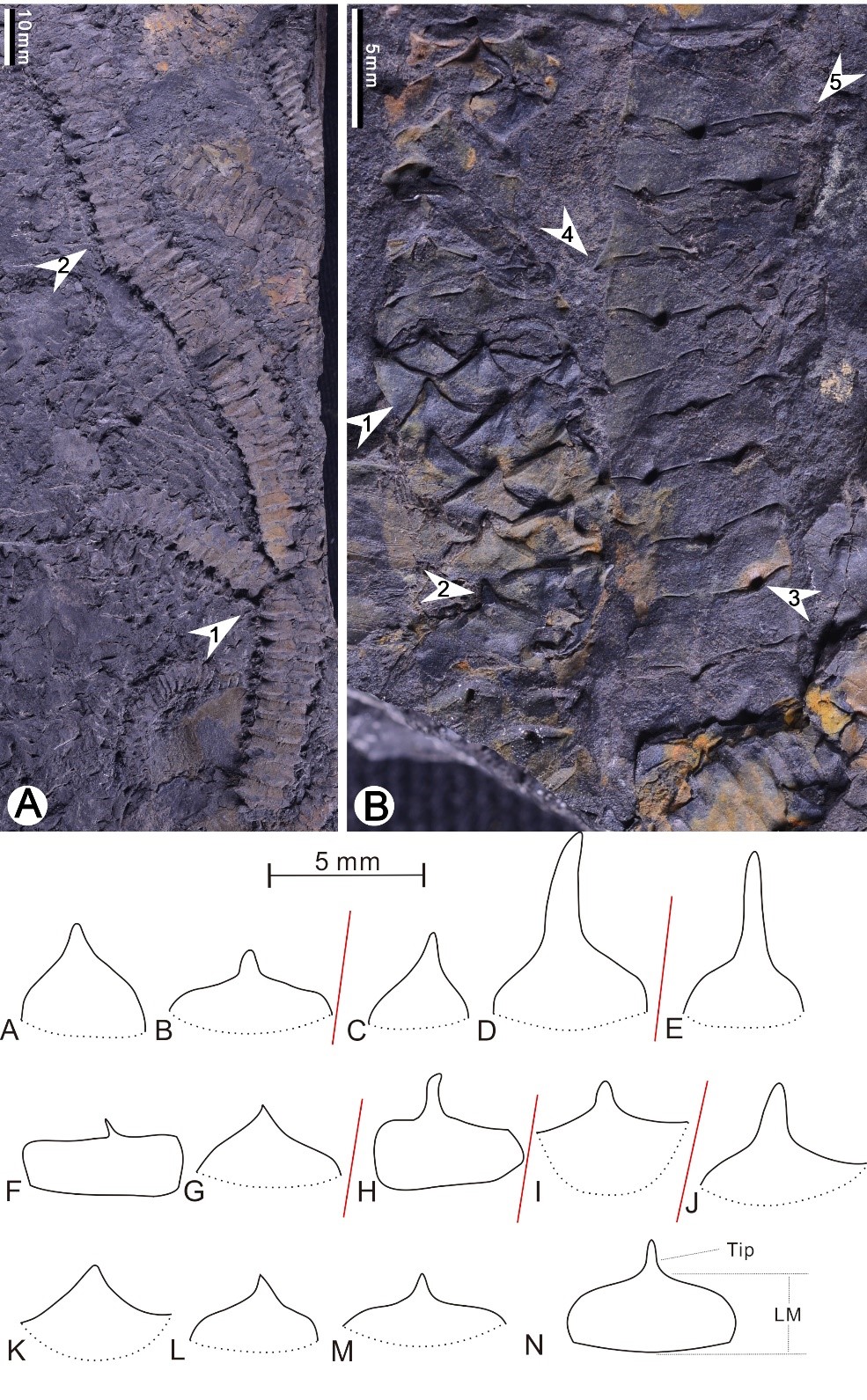Devonian witnessed the first forest on the Earth and the earliest coal formed by land plants. The Middle to Upper Devonian of West Junggar, northern Xinjiang, China yields abundant plant fossils, and finds hydrocarbon source rocks and ancient petroleum reservoirs (APR). The petroleum reservoirs in geological history were destroyed by tectonic movements to form APR. The important mark of APR is solid bitumen.
Although, the age, formation and destruction of APR have been studied before, no detailed study has been conducted on the plant fossils in APR, and the stratigraphical sequence of APR in the field is different from previous studies. Therefore, it is necessary to conduct in depth study on age, stratigraphical sequence and plant fossils of APR of North Xinjiang.
Recently, the Devonian Investigation Group (DIG) of Nanjing Institute of Geology and Palaeontology, Chinese Academy of Sciences (NIGPAS), led by Prof. XU Honghe and Prof. WANG Yi, conducted study on age, stratigraphical sequence and plant fossils of APR of North Xinjiang. The related research results were published in Journal of Stratigraphy and the international journal Plants.
Based on lithostratigraphical and palaeobotanical study to the Devonian APR, the study demonstrates that the APR belongs to the Upper Member of the Hujiersite Formation with the age of late Middle Devonian (Givetian). The core layer of APR is 2 m thick, and the lithology is dominated by sandstone and mudstone.
The research also studied the genus of Barsassia in APR. Since the establishment of Barsassia in 1933, there has been a lack of systematic study for a long time, resulting in unclear and confusing generic and specific diagnoses. Here, we systematically study the Devonian lycopsid Barsassia, based on the new materials in APR. Barsassia ornata is determined as the type species of the genus, and a neotype is designated for that name. Barsassia ornata is a herbaceous lycopsid consisting of easily recognized and characteristic step-like stem and tight, pseudowhorls, and imbricate fan- or rectangular-shaped leaves, and can be used in dating and correlating the Middle Devonian terrestrial strata in Siberia, Kazakhstan and Xinjiang.
References:
1. Liu, B. C; Zong, R. W; Wang, Y.; Xu, H. H*. 2021. On the age of Devonian ancient petroleum reservoir in West Junggar, northern Xinjiang, China. Journal of Stratigraphy, 45(2): 196-203. https://doi.org/10.19839/j.cnki.dcxzz.2021.0018.
2. Liu, B. C; Wang, K.; Zong, R. W; Wang, Y.; Xu, H. H*. 2021. Morphology and Nomenclature of Barsassia (Lycopsida) from the Middle Devonian of West Junggar, Xinjiang, China. Plants, 10, 2631. https://doi.org/10.3390/plants10122631.

Fig. 1:The stratigraphical sequence, outcrop and plant fossils in APR.

Fig. 2: Barsassia ornata from APR, with easily recognized and characteristic step-like stem and rectangular-shaped leaves
Contact:
LIU Yun, Propagandist
Email: yunliu@nigpas.ac.cn
Nanjing Institute of Geology and Palaeontology, Chinese Academy of Sciences
Nanjing, Jiangsu 210008, China
